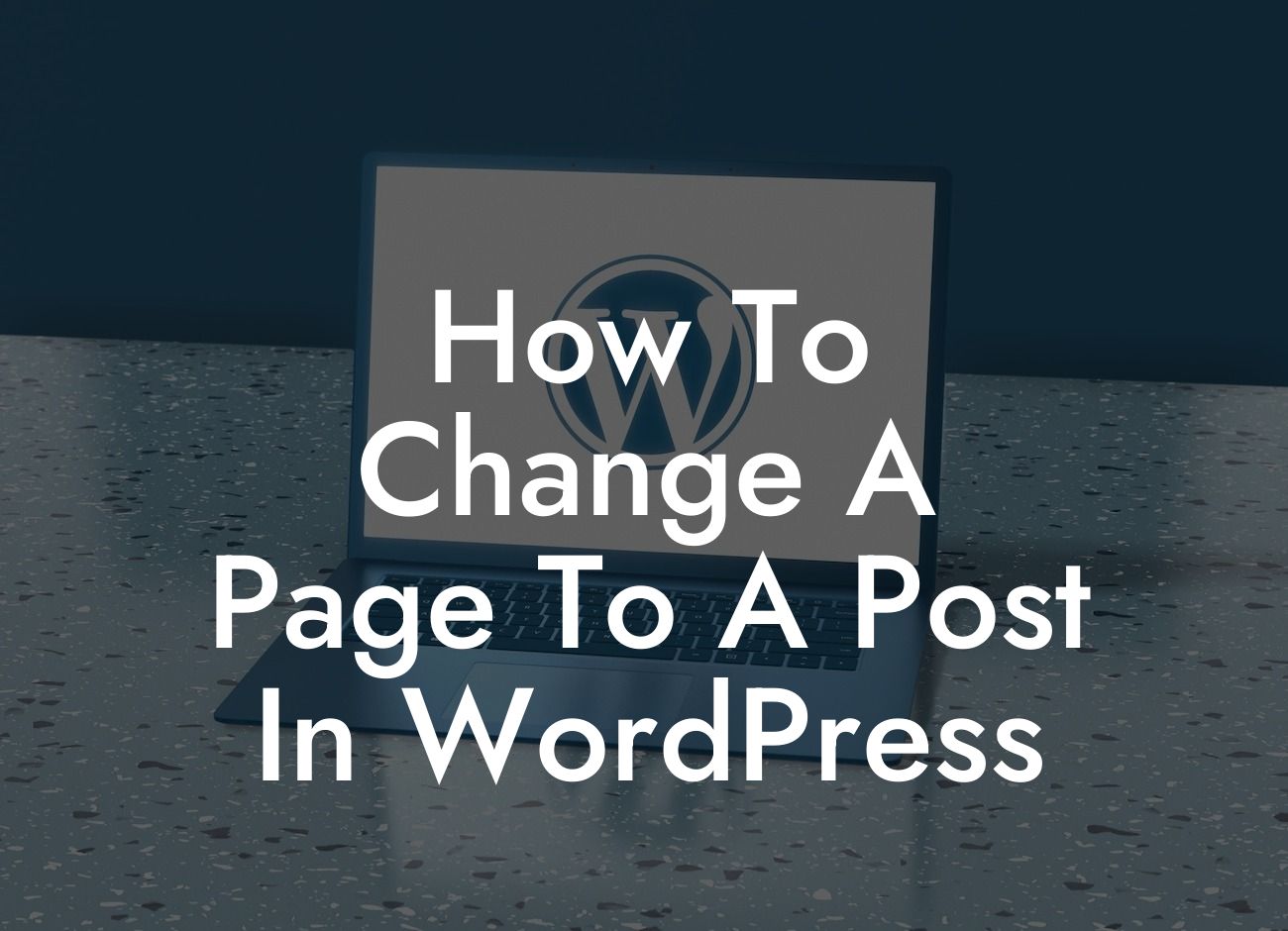Changing the page type from a page to a post in WordPress may seem like a daunting task for small businesses and entrepreneurs. But fear not, because at DamnWoo, we have got you covered! In this guide, we will walk you through the step-by-step process of transforming a page to a post effortlessly. Say goodbye to cookie-cutter solutions and elevate your online presence with this extraordinary method.
Changing a page to a post requires a few simple steps. Let's dive in and explore how it's done:
1. Access the Page Editor: First, log in to your WordPress dashboard and navigate to the Pages section. Choose the page you want to convert into a post by clicking on its name.
2. Convert to Draft: Once you're in the Page Editor, scroll down to the Publish settings. Click on the "Move to Trash" button located in the top-right corner. This action will move the page to the trash and convert it into a draft.
3. Switch to Post Editor: Now, go to the Posts section in your WordPress dashboard. On the left sidebar, select "Add New" to create a new post.
Looking For a Custom QuickBook Integration?
4. Retrieve Content: Open the trashed page by visiting the Trash section under the Pages tab. Locate the page you just converted into a draft and click on "Restore."
5. Copy and Paste: With the restored page open, select all the content by pressing Ctrl+A (Command+A on Mac) and then copy it using Ctrl+C (Command+C on Mac). Head back to the Post Editor, and paste the content into the editor using Ctrl+V (Command+V on Mac).
6. Customize the Post: Now that the content is added, you can modify the post title, categories, and tags as needed. Make any adjustments necessary to ensure the post matches your desired structure.
How To Change A Page To A Post In Wordpress Example:
Let's consider a practical example. Imagine you have a well-designed page discussing the benefits of your new product. You want to transform this page into a post to reach a wider audience through your blog. By following the steps above, you can effortlessly change the page to a post, retain the content's SEO value, and add it to your blog section. This way, you can engage your audience while showcasing different aspects of your business.
Congratulations! You have successfully learned how to change a page to a post in WordPress. With this newfound knowledge, you can now tailor your content strategy for optimum online growth. Be sure to share this article with others who might find it useful and explore more guides on DamnWoo. Boost your online presence even further by trying one of our awesome WordPress plugins designed exclusively for small businesses and entrepreneurs. Let DamnWoo be your partner on the journey to success.













